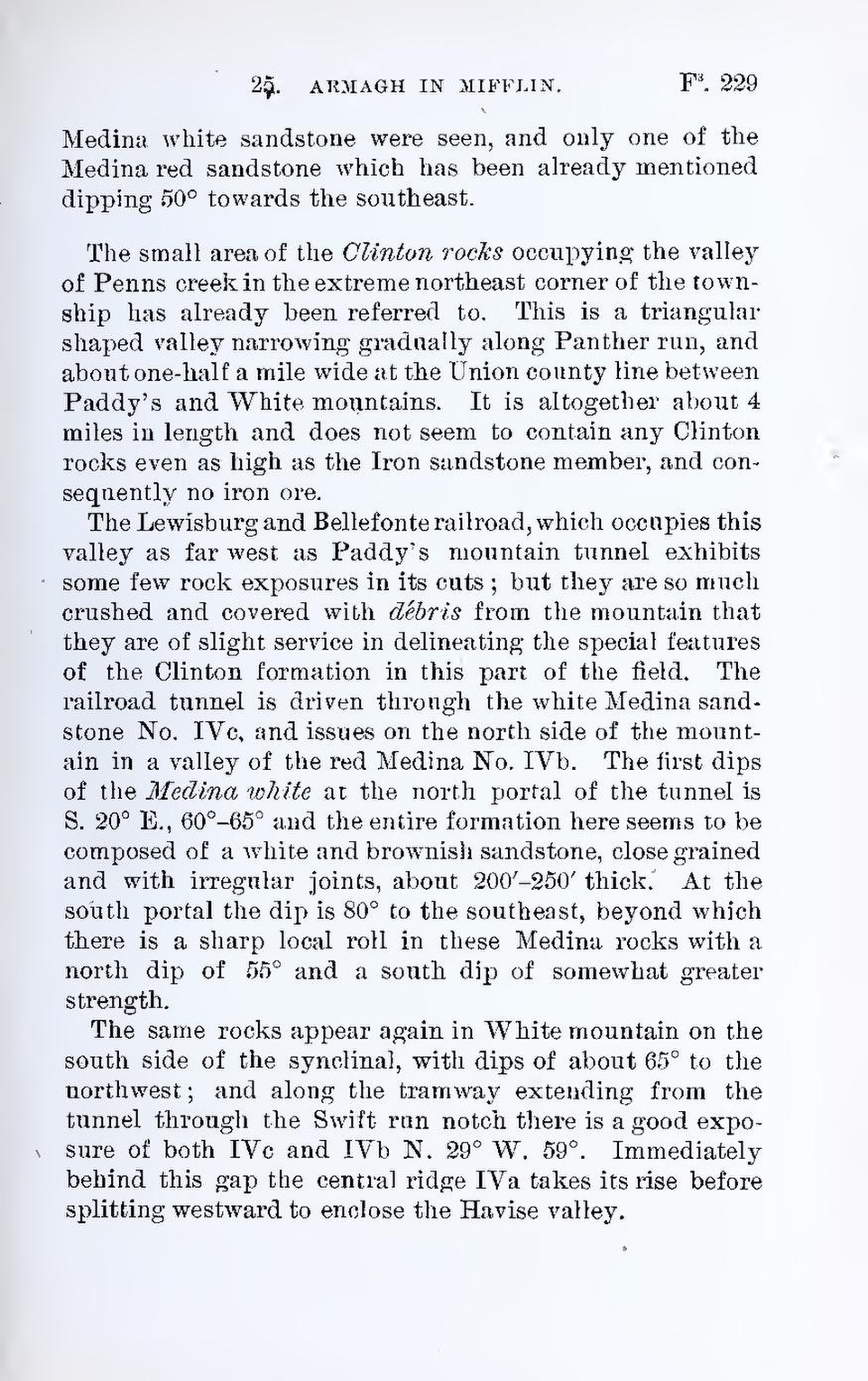Medina white sandstone were seen, and only one of the Medina red sandstone which has been already mentioned dipping 50° towards the southeast.
The small area of the Clinton rocks occupying the valley of Penns creek in the extreme northeast corner of the township has already been referred to. This is a triangular shaped valley narrowing gradually along Panther run, and about one-half a mile wide at the Union county line between Paddy’s and White mountains. It is altogether about 4 miles in length and does not seem to contain any Clinton rocks even as high as the Iron sandstone member, and consequently no iron ore.
The Lewisburg and Bellefonte railroad, which occupies this valley as far west as Paddy’s mountain tunnel exhibits some few rock exposures in its cuts; but they are so much crushed and covered with débris from the mountain that they are of slight service in delineating the special features of the Clinton formation in this part of the field. The railroad tunnel is driven through the white Medina sandstone No. IVc, and issues on the north side of the mountain in a valley of the red Medina No. IVb. The first dips of the Medina white at the north portal of the tunnel is 5. 20° E., 60°–65° and the entire formation here seems to be composed of a white and brownish sandstone, close grained and with irregular joints, about 200′–250′ thick. At the south portal the dip is 80° to the southeast, beyond which there is a sharp local roll in these Medina rocks with a north dip of 55° and a south dip of somewhat greater strength.
The same rocks appear again in White mountain on the south side of the synclinal, with dips of about 65° to the northwest; and along the tramway extending from the tunnel through the Swift run notch there is a good exposure of both IVc and IVb N. 29° W. 59°. Immediately behind this gap the central ridge IVa takes its rise before splitting westward to enclose the Havise valley.
